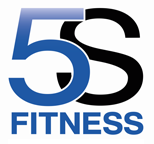The deadlift is the king of the hinge and pull movements, and is the key to the development of strong, powerful hips.
It should be noted that injuries are not just a matter of technique or poor form. Regardless of whether you lift correctly or not, if your soft tissues haven’t got the strength to handle the load (even with perfect form), injuries such as straining your lower back muscles can occur.
When it comes to the deadlift, many people are hell-bent on going as heavy as they can on every session, even if it’s the first time they have lifted a barbell off the floor. However, to make real physical progression, you need to develop every link within the kinetic chain that is in your body and progressive programming will allow all your structures to adapt, remembering that some structures, particularly smaller muscles involved in joint stabilisation, may not develop as quickly as others.
The lower back is one of the most important links within the kinetic chain. Without strength in this area we not only compromise performance, but also risk serious, life-changing injury.
Do not under estimate the importance of the lower back; it is truly an integral part of your ability to maintain posture and maximise performance.
1. Set the barbell up on the floor with 45cm plates.
2. Approach the barbell so that your midfoot is directly underneath it. Your shins should be an inch away from the barbell.
3. Hinge with your hips and bend your knees until you can grasp the barbell.
4. Take an (over-hand) or alternated (one over-hand and one under-hand) grip.
5. Sit back with your glutes and drive your chest/ribcage up. This will bring your shins forward until they come into contact or are just off the barbell.
6. Take a big gulp of air, use the Valsalva manoeuvre, and brace your core musculature. As you do this, pull on the barbell slightly to create more tension and take the slack out of the barbell.
7. Drive your heels into the floor and pull the barbell upwards and rearwards off the floor. Allow time for inertia of the bar to be broken. You must produce enough force to break the weight off the floor, and this doesn’t always happen as soon as you start pulling.
8. Once the barbell passes your knees, drive your hips into it and push your chest up. Your shoulders will fall naturally behind the barbell. There is no need to shrug or throw your shoulders rearwards.
9. Once you have finished locking out your hips, drive your glutes rearwards and bend your knees slightly to allow the barbell to track down your legs smoothly (just like the RDL).
10. Once the barbell passes your knee caps, bend your knees until the plates touch the floor.
11. At the bottom, exhale and get ready for the next rep.
12. Don’t bounce the plates off the floor to create upward momentum. Treat every lift as an individual rep.
13. Depending on the weight being used, complete 3-5 sets of 2-5 reps.
Thanks for reading
Jay
Follow us on:
Facebook: www.facebook.com/5sfitnessuk
Twitter: www.twitter.com/5sfitness
Instagram: www.instagram.com/5s_fitness
YouTube: www.youtube.com/channel/UC66XVf9NZBO8j-V4or5d2Tg

